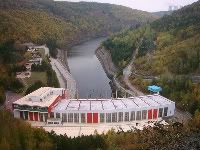A Few Perspectives on Energy Storage
One of the things I enjoy most about shows like Storage Week, sitting through many dozens of presentations on energy storage, is the breadth of perspective on the subject of clean energy. We all know that ultimately, storage is 100% required if we are to achieve the high rates of penetration we’d all like to see. That, of course, is a function of intermittency – dealing with the fact that the sun shines only during the day, while the wind blows hardest at night, when the demand is at its lowest. (70% of the total wind energy in California happens at night.)
But here are a few additional ways of looking at storage. A great deal of attention in managing the electrical grid in any given region is placed on dealing with peak consumption on a daily basis – and especially with the few hours per year that represent the absolute highest peaks that occur during the summer’s hottest afternoons. But grid managers’ dealings with load fluctuations and resource availability are not occasional incidents. In one region of the country, the spreadsheet that lists the purchase of “ancillary services,” those that are necessary to provide the precise correct amount of power, has 850,000 rows (i.e., purchases) annually.
Thus, from one important perspective, energy storage solutions compete against gas-fired peaker plants, those facilities that can be ramped up and down very quickly to meet peak demand. How quickly? There are places in the US where weather conditions change dramatically and 900 MW of wind goes to 200 MW in half an hour. And wind is far more predictable than solar, where a cloud can form and blow over a solar field in a matter of minutes.
But another completely different way of looking at storage is finding a home for off-peak energy generation. As we put more wind into our grid mix, we get more off-peak wind – and thus more curtailment – the condition where wind turbines must be turned off because the power they produce cannot be accommodated. Curtailment costs wind developers huge sums of money; last year, it represented 5% of the total installed wind capacity.
Yet another viewpoint is demand response. Utilities pay their customers big bucks (in rate reductions) for the right to cut a certain percentage of power to those customers under peak load conditions.
So, storage provides a great number of different but important benefits. Yet at the end of the day, the gating factor for storage is essentially political and economic. Though there is enormous value to having storage on the grid, the question is: Who’s going to pay for it? In an environment like the one we have in the US, where there are different types of entities that generate, transmit, and distribute the power – each regulated differently, there is no one single entity that can rationally be expected to pay for a solution whose benefits do not accrue solely to that entity.
As one of the speakers here just told me when I confessed how difficult the business issues in this area are so hard for me to grasp, “The politics behind all this is byzantine. It’s not terrible in Texas, but in places like California, it’s a total mess. Powerful interests have succeeded in pushing through legislation, and they derived great benefit, but left the state with a set of regulations that make no sense whatsoever. Don’t feel bad if you’re having trouble understanding this. It took me years to figure it out.”
OK, I feel a bit better. But it sure is a shame that our health and safety — not to mention economical well-being — is being manipulated by a few greedy pigs.
And not to sound pessimistic, but we really seem to be a million miles from straightening this out. In essense, you have huge business interests in the energy industry that have no incentive to move this in the right direction. Are we expecting them to do it anyway? Doesn’t sound too likely to me.

